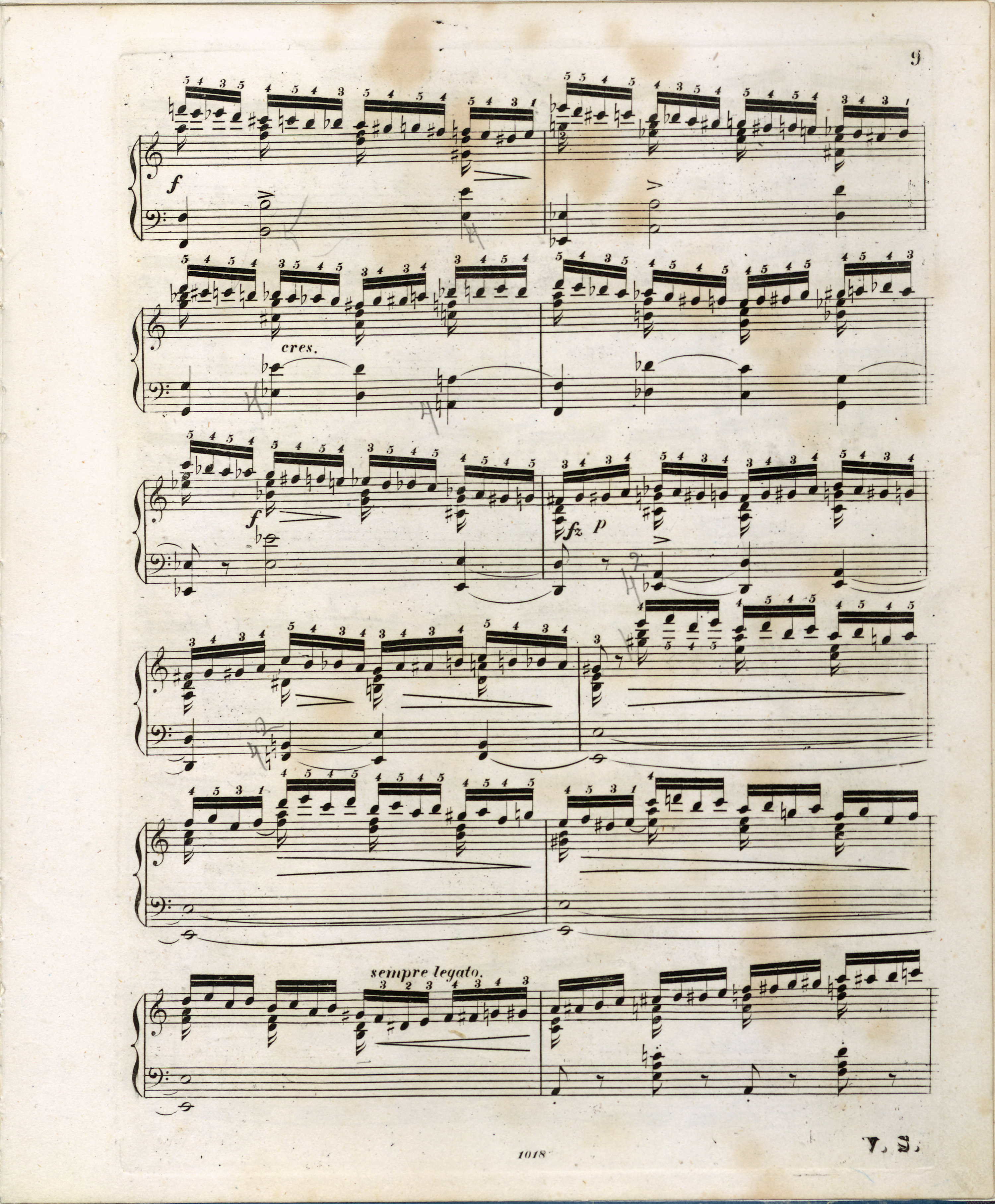



Combining the triton with the following octave, most probably related to the relevant accentuation, constituted an essential formal shaping factor of these two bars from the very beginning. It is proved by the presence of two slurs in CLI, the only performance markings in this manuscript, which undoubtedly recreates a very early stage of the Etude's notation. Taking into account the working nature of this notation, the slurs may have concerned also the remaining pairs of two-note chords, being a repetition of the ones provided with slurs. This assumption is proved by the later sources:
- Ap has slurs in three pairs, including two double ones;
- in the base text for FE, double slurs combine the first two pairs, yet the lack of slurs next to two subsequent ones was certainly accidental, as Chopin added them in FEcor (single ones).
According to us, the aforementioned proves that Chopin's intention was to combine each of four pairs of two-note chords with slurs. The question of using single and double slurs remains to be discussed. The analysis of the entries in particular sources allows to claim that:
- single slurs were put by Chopin both next to the upper notes of two-note chords (CLI and Ap) and lower ones (FEcor);
- in three out of four places Chopin wrote double slurs – in Ap in the 1st and 3rd pairs, in the base text for FE in the 1st and 2nd pairs;
- varying slurs in FE were written by Chopin in different time span – double ones in the base text for FE, single in FEcor. However, Chopin did not entirely waive the double ones, as in a later proofreading of FE he used them again to combine the octaves in bars 29-30.
According to us, on the basis of the above, it may be concluded that the homogenous notation with double slurs could be compatible with Chopin's intention to the same extent as the one which was actually printed in FE (→EE2→EE3). Therefore, in the main text we propose this homogenous notation introduced already in EE4 and GE4 (→GE5).
Compare the passage in the sources »
category imprint: Interpretations within context; Differences between sources
issues: EE revisions, GE revisions, Authentic corrections of FE
notation: Slurs






